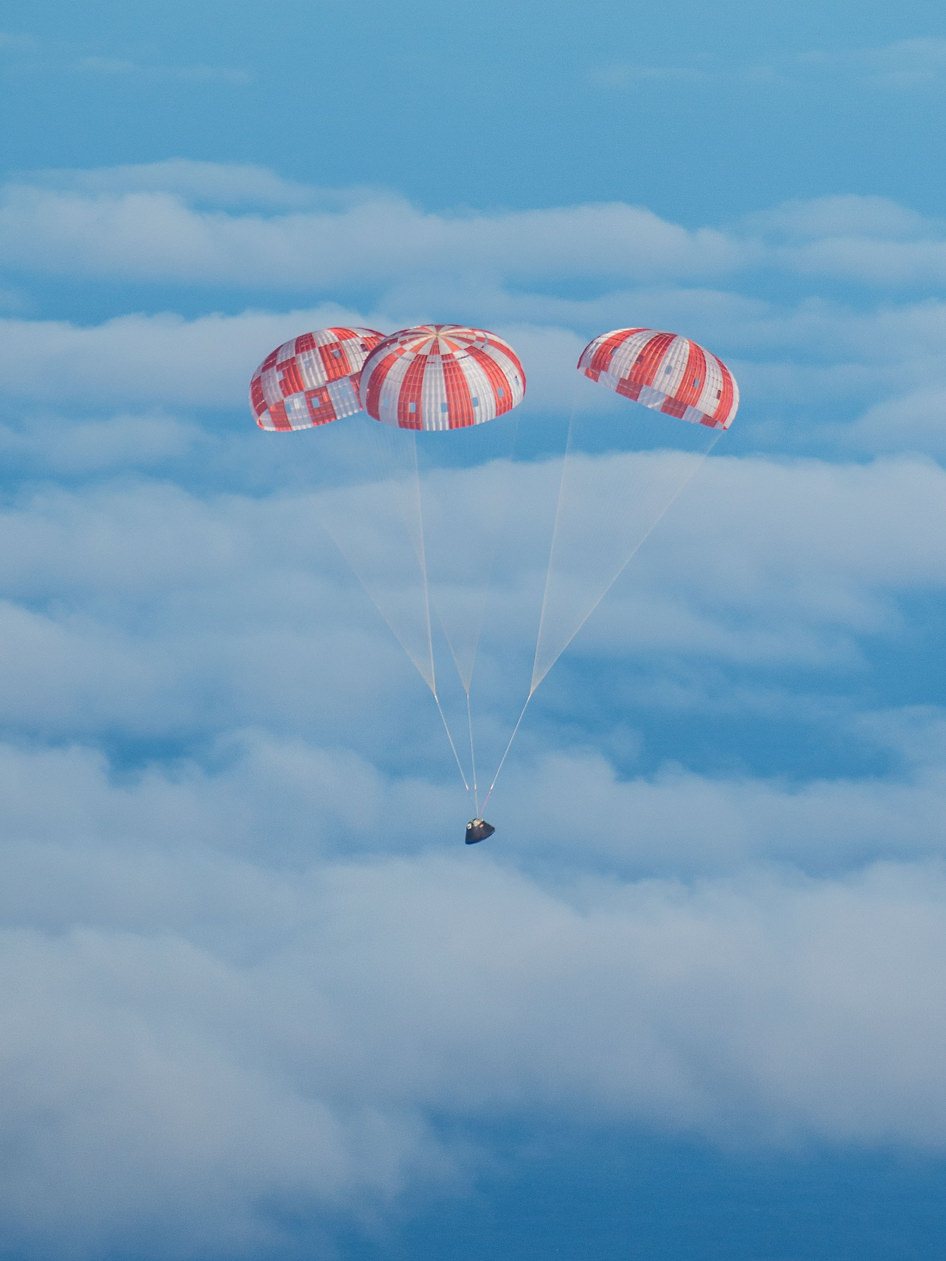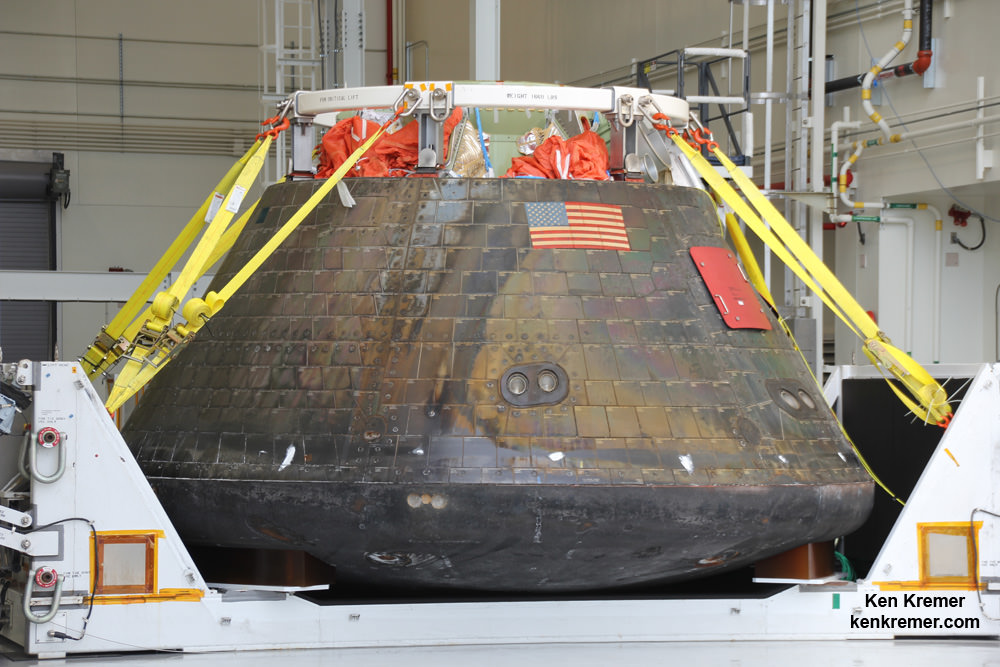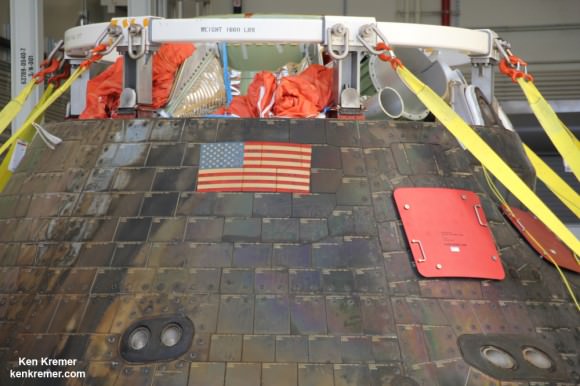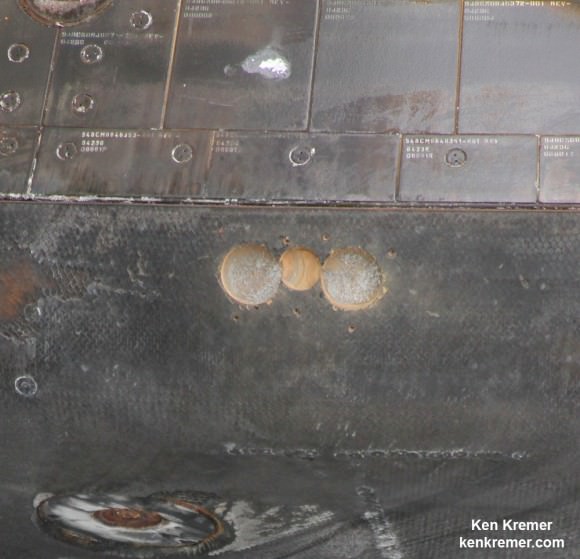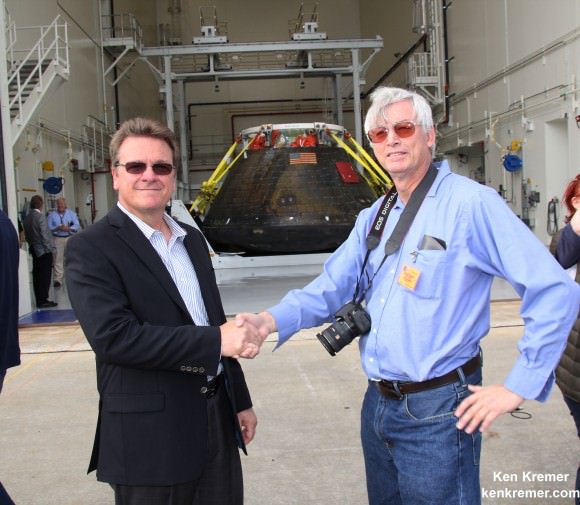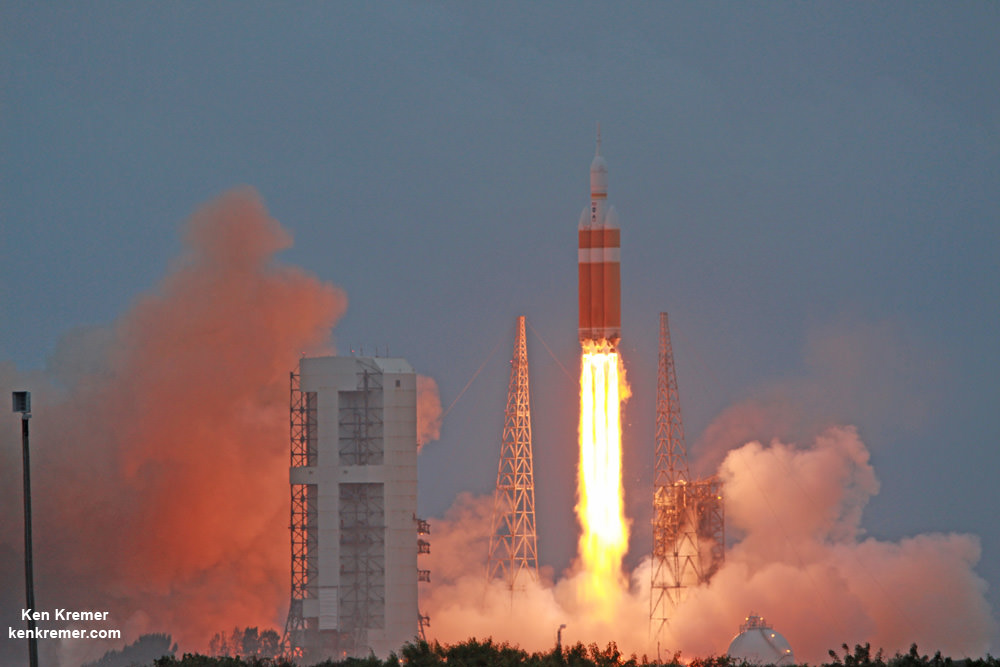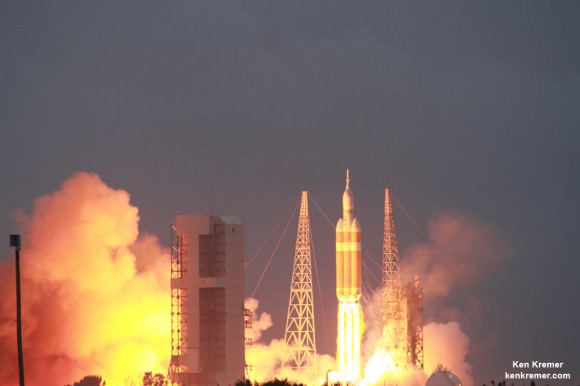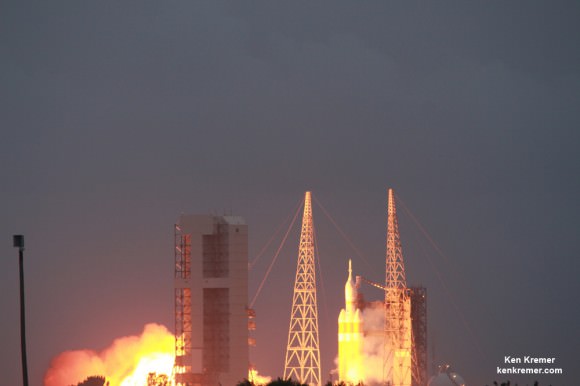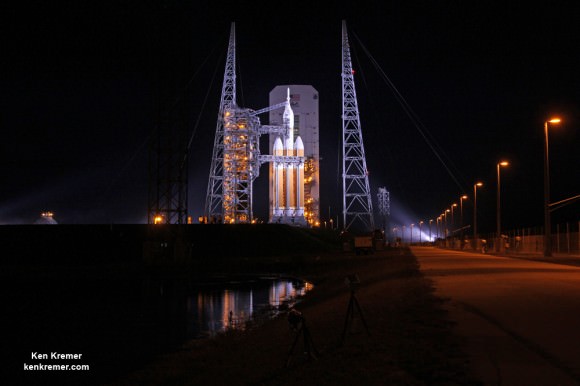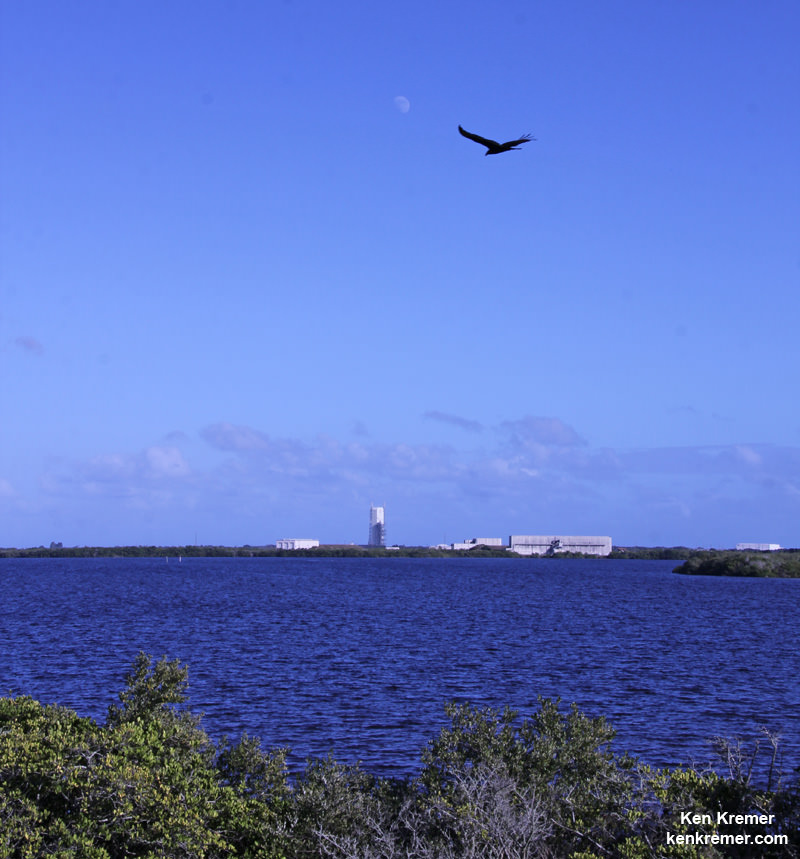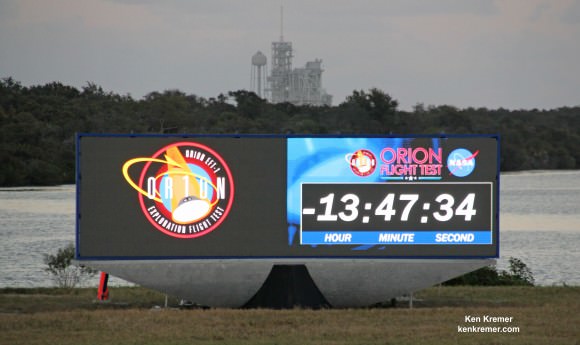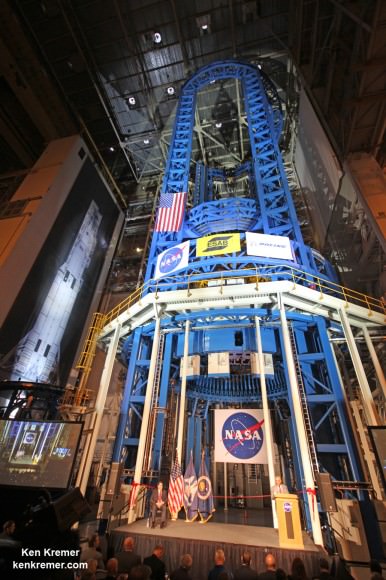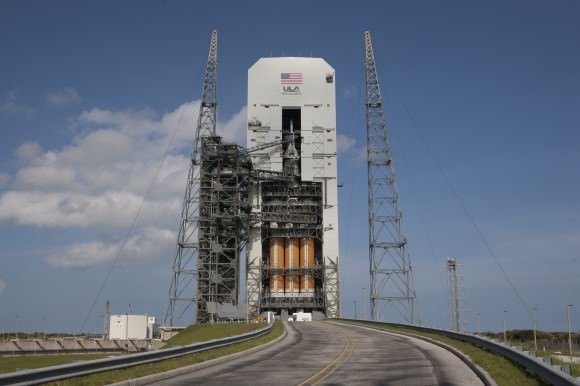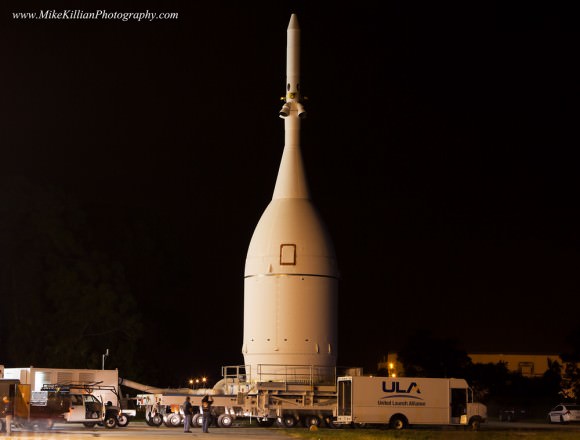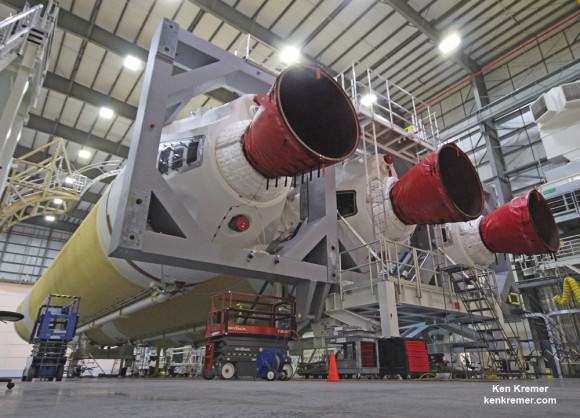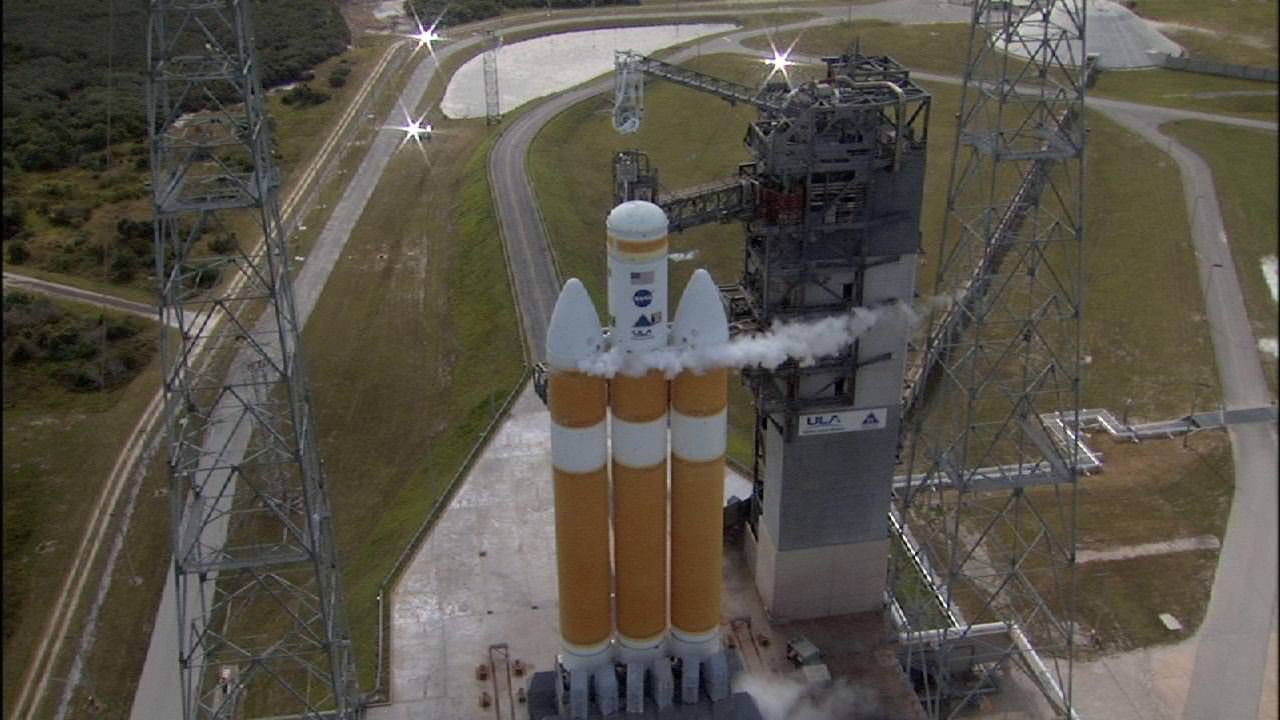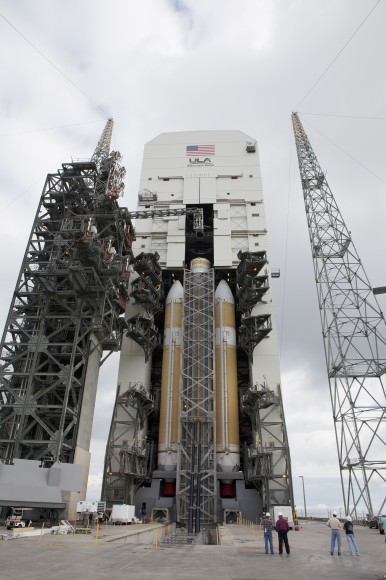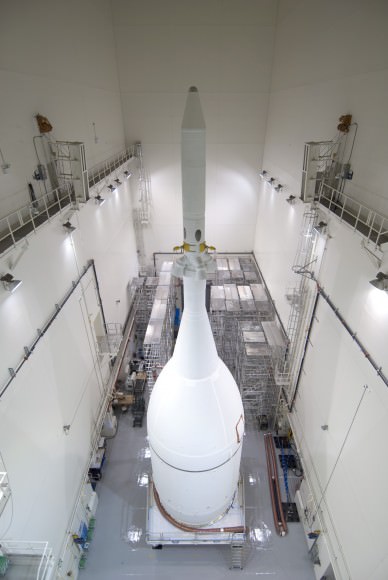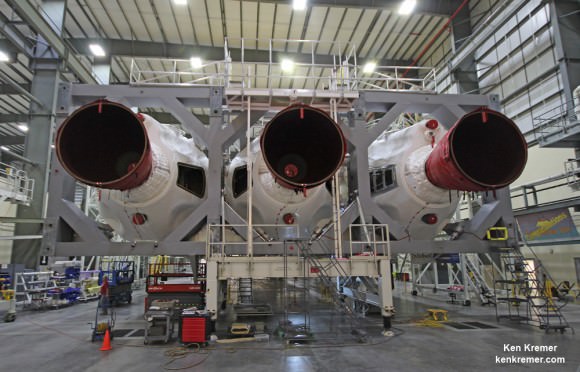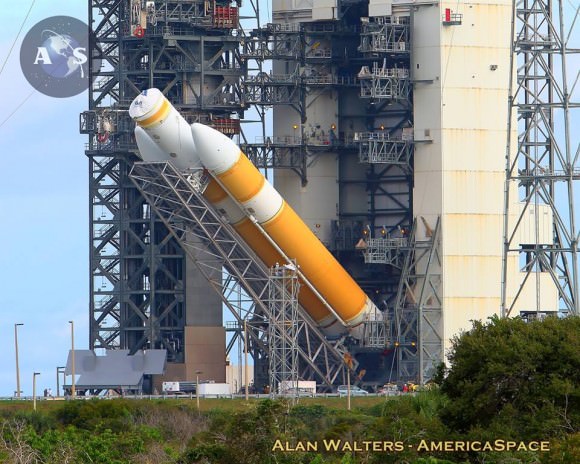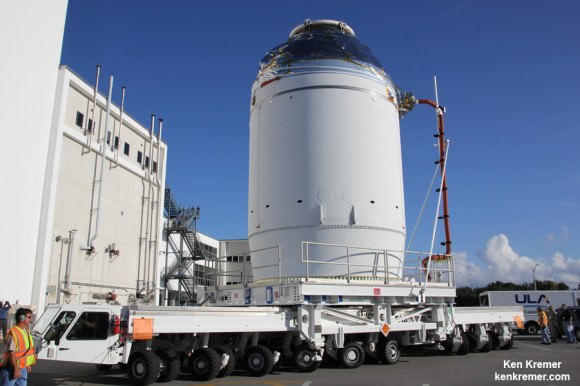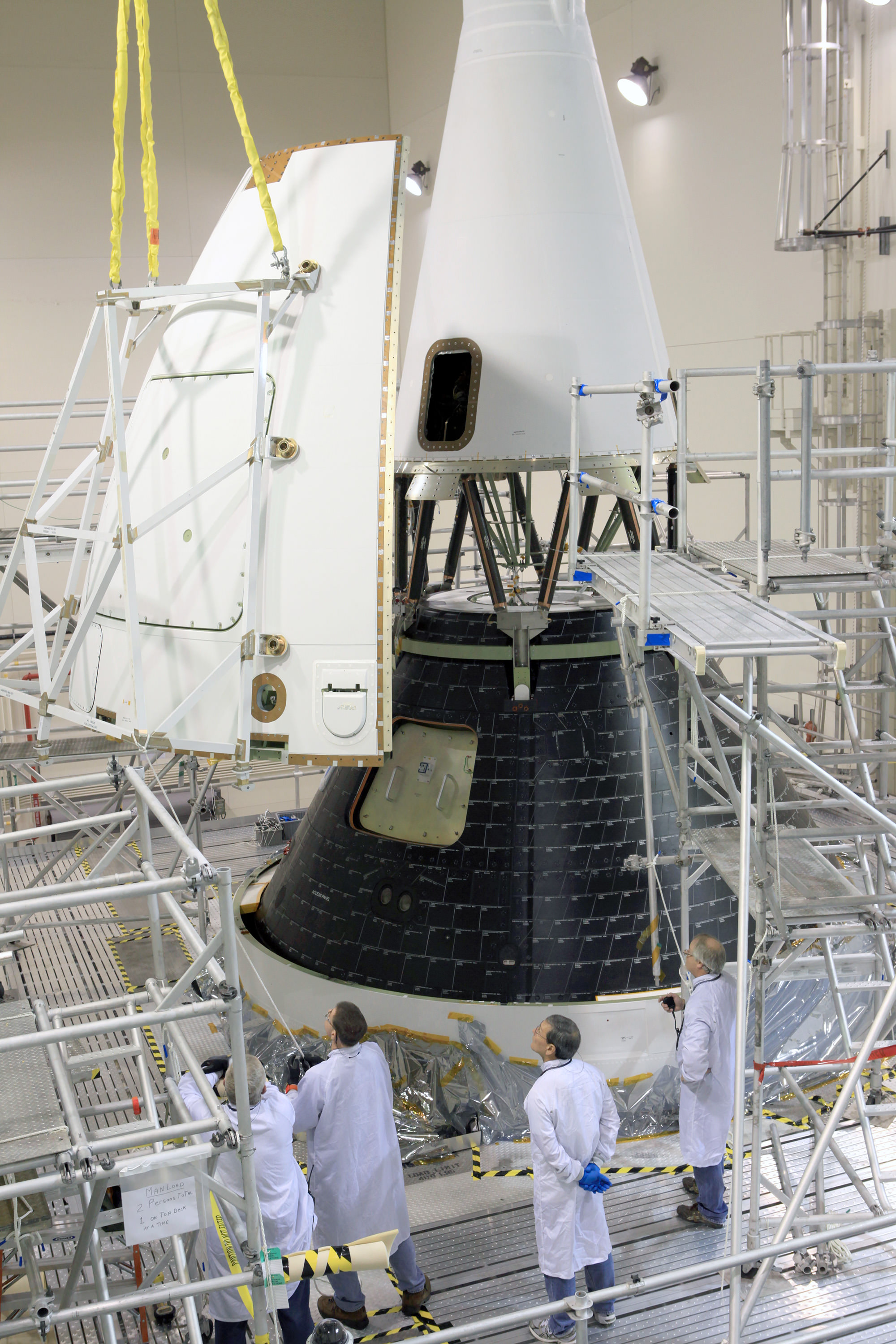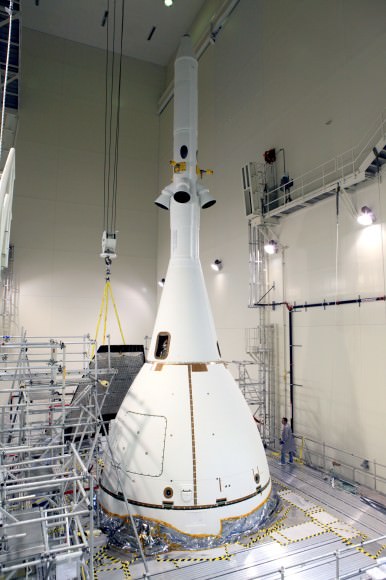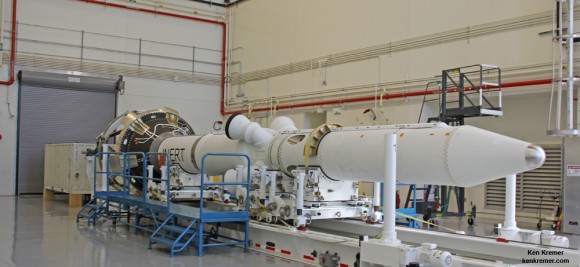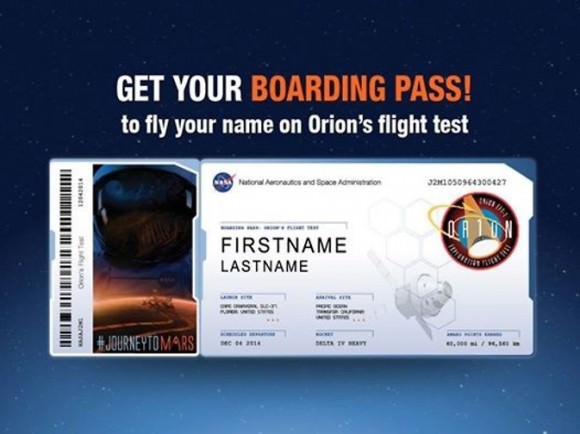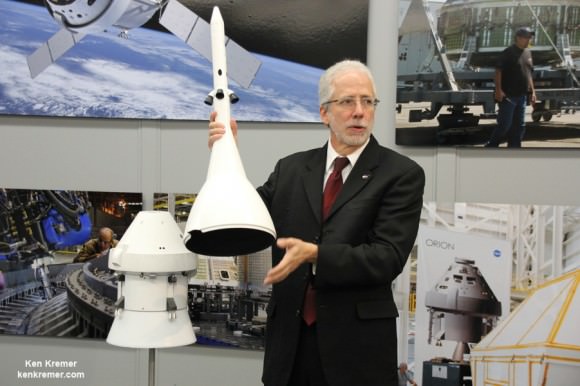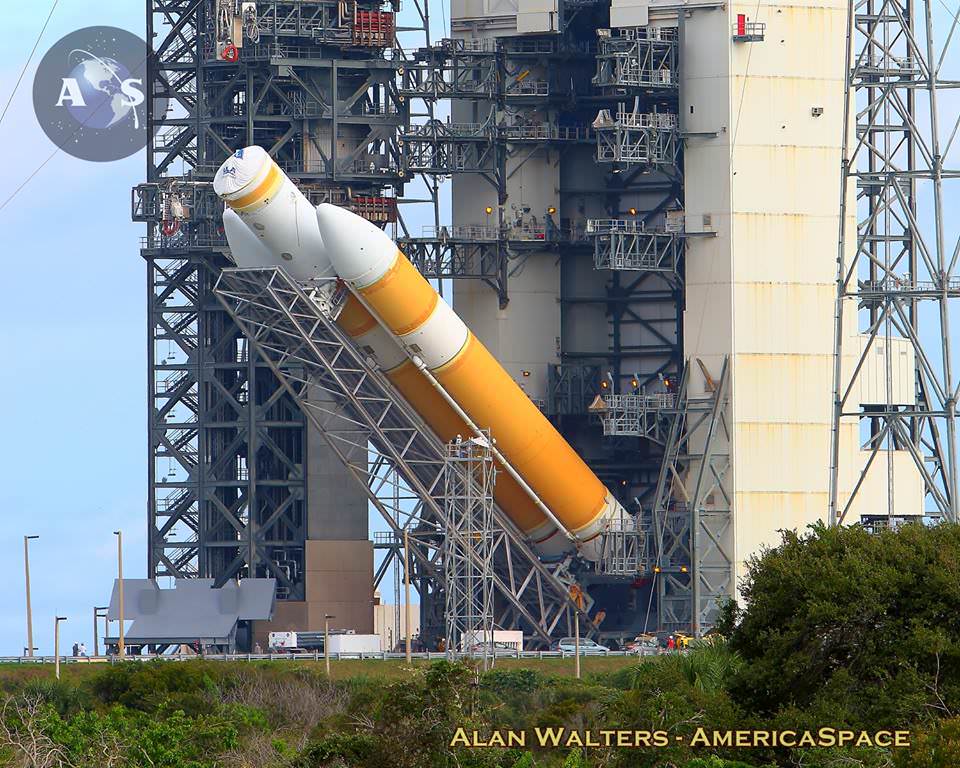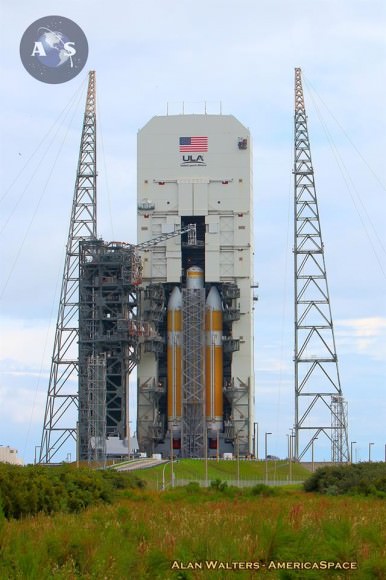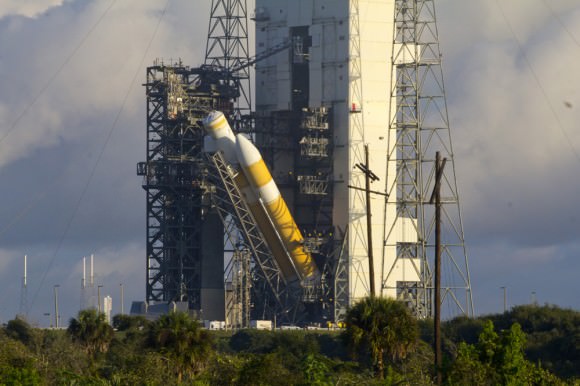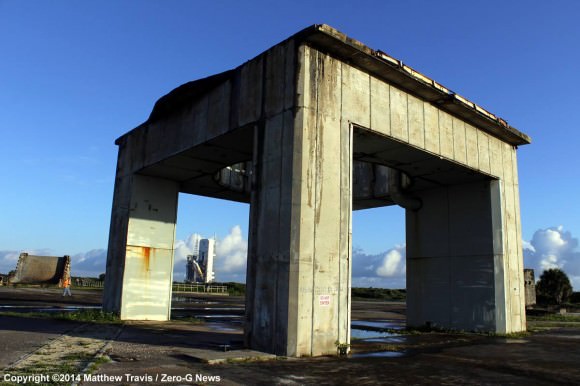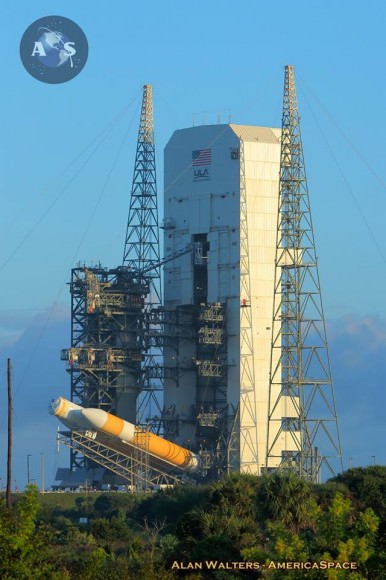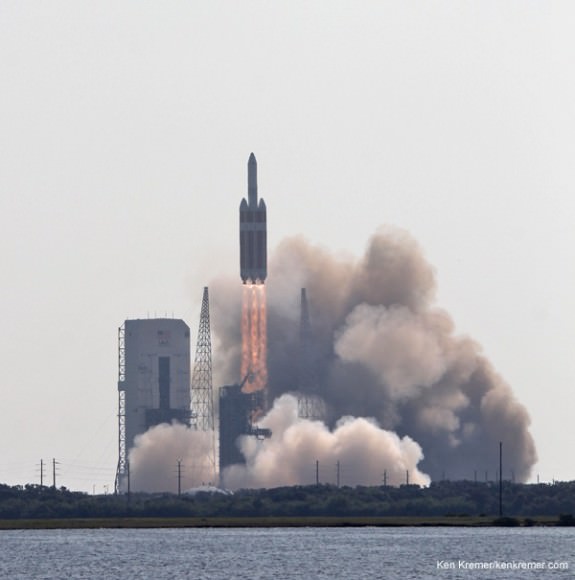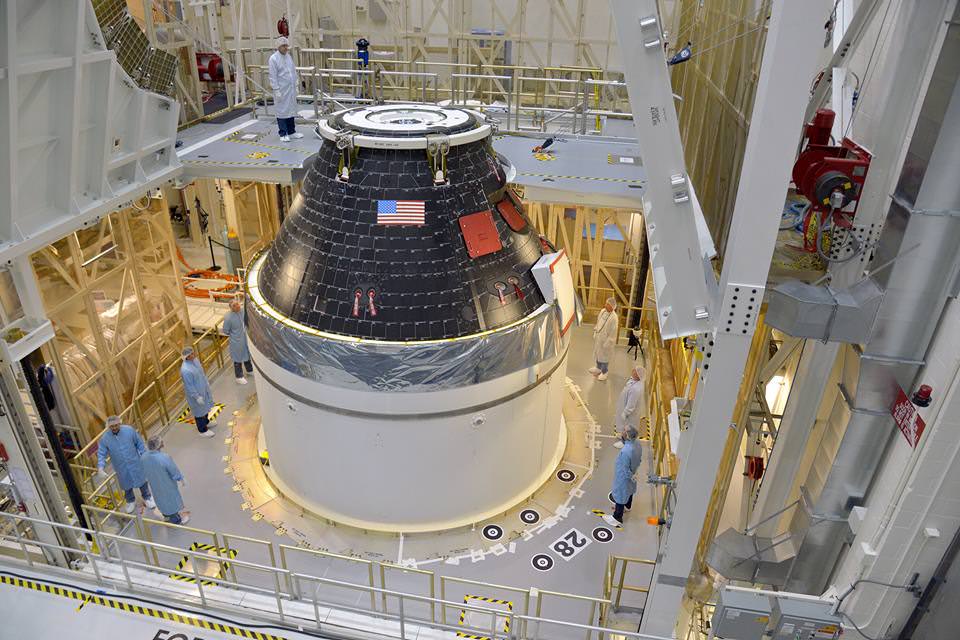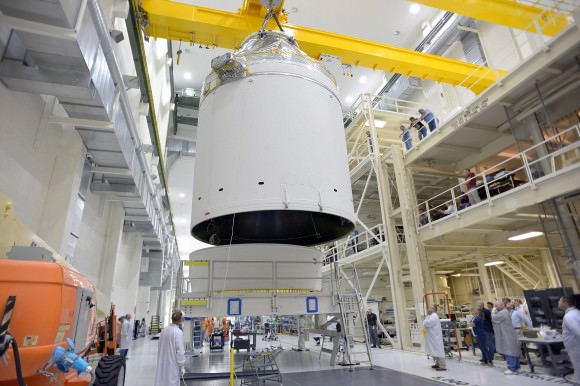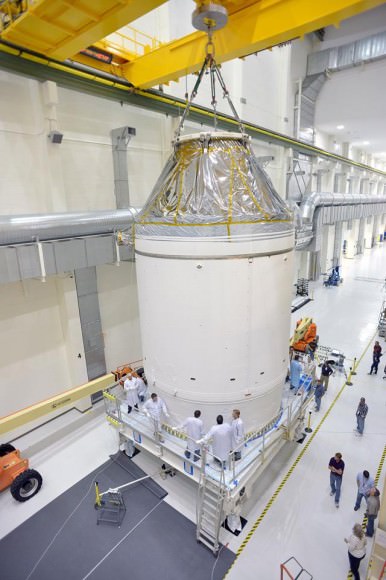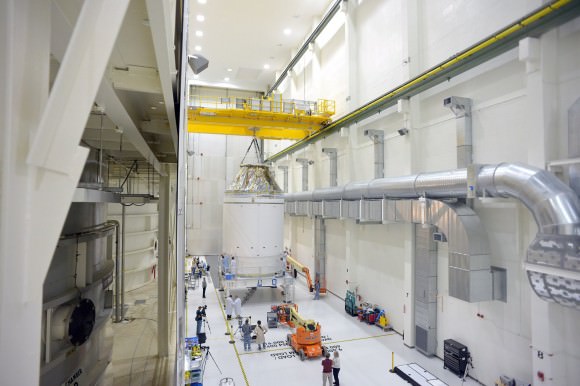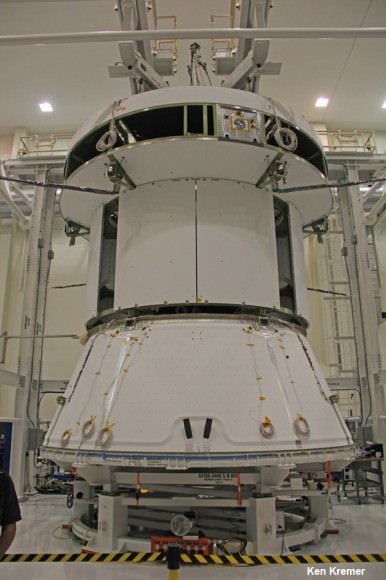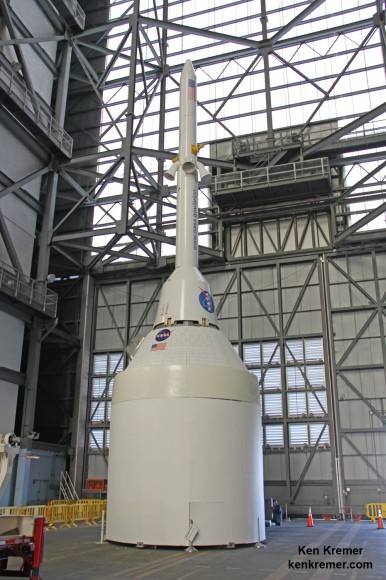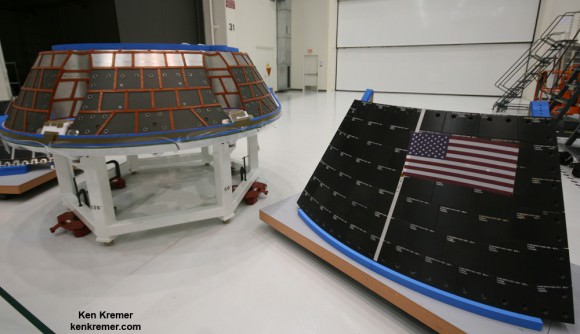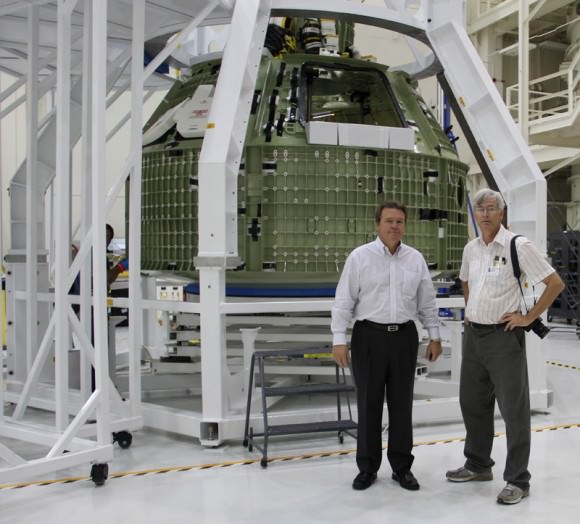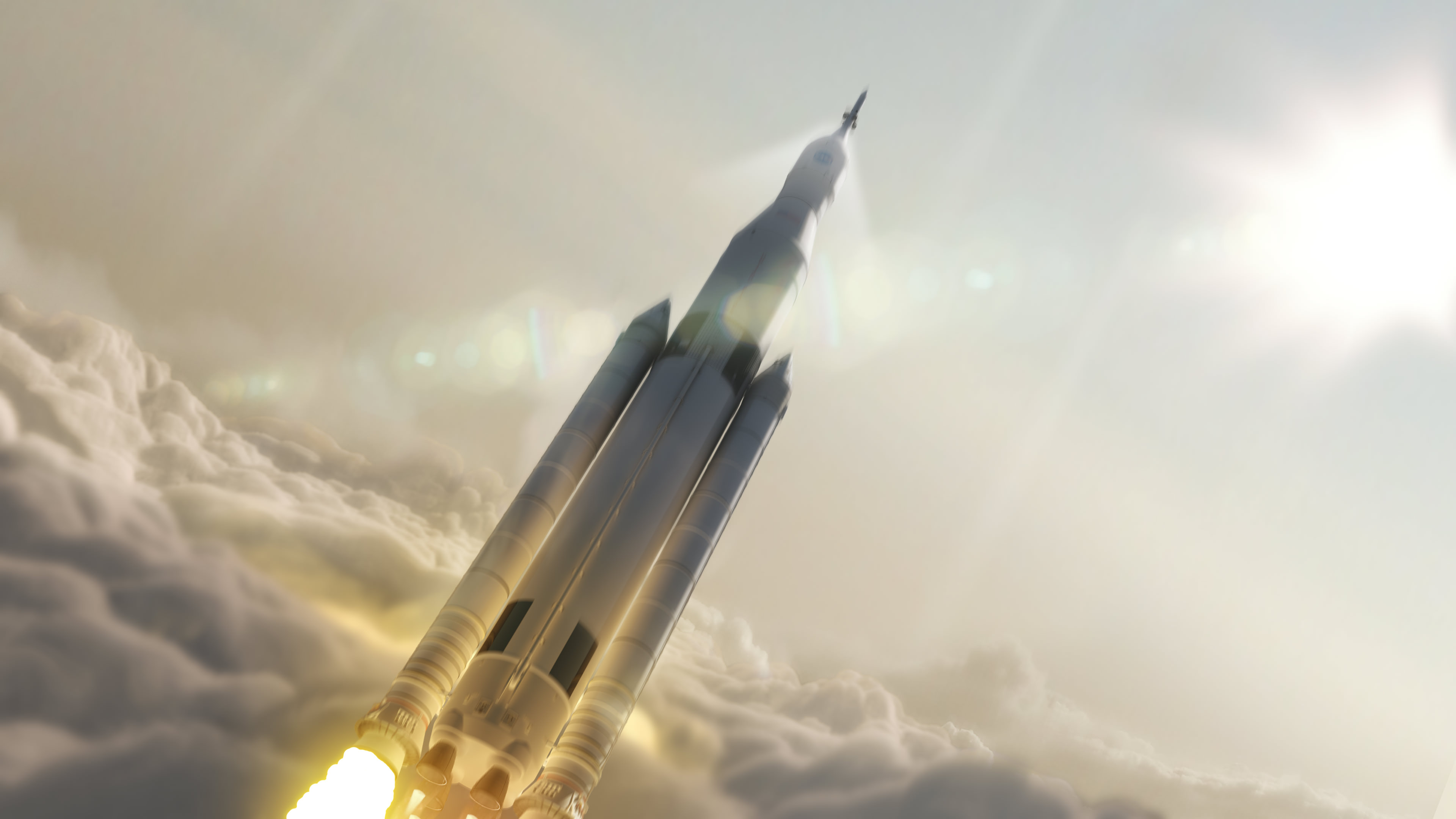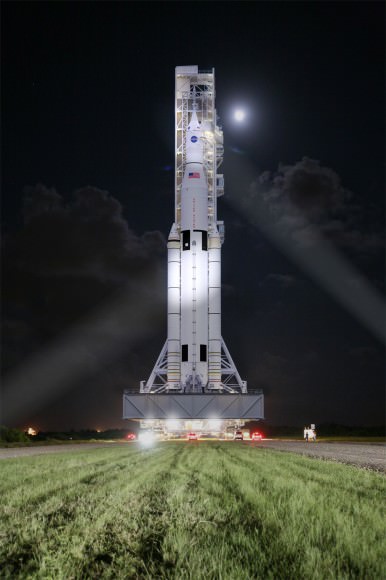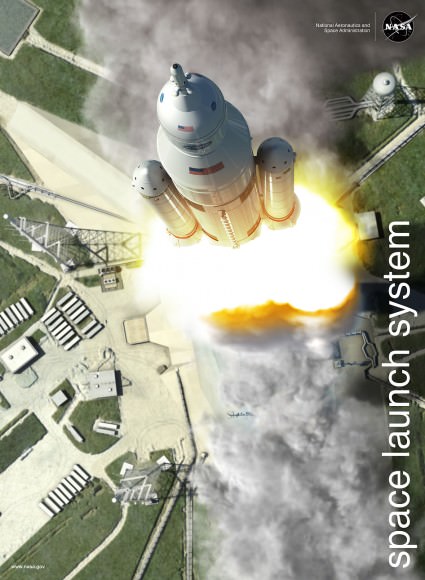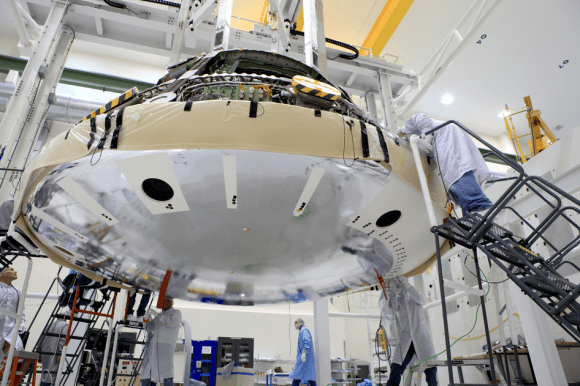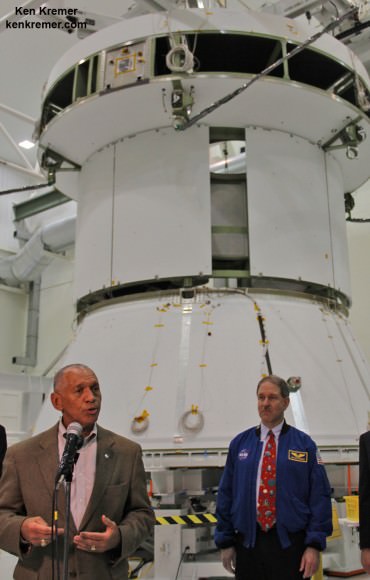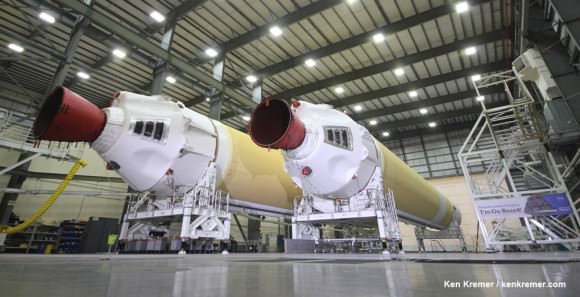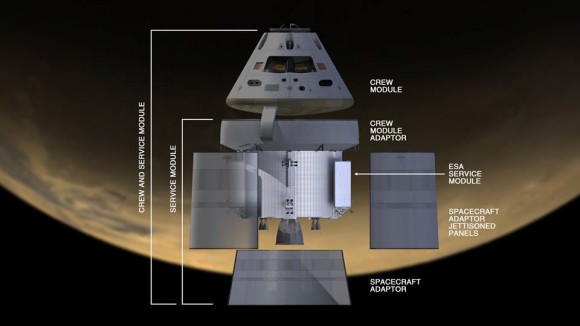Video Caption: New video recorded during NASA’s Orion return through Earth’s atmosphere provides viewers a taste of what the vehicle endured as it returned through Earth’s atmosphere during its Dec. 5 flight test. Credit: NASA
KENNEDY SPACE CENTER, FL – Newly released NASA footage recorded during the first test flight of NASA’s Orion crew capsule this month gives an astronaut’s-eye view of what it would have been like for a crew riding along on the “Trial by Fire” as the vehicle began the fiery reentry through the Earth’s atmosphere and suffered scorching temperatures during the approximately ten minute plummet homewards and parachute assisted splashdown.
“The video provides a taste of the intense conditions the spacecraft and the astronauts it carries will endure when they return from deep space destinations on the journey to Mars,” NASA said in a statement.
The video was among the first data to be removed from Orion following its unpiloted Dec. 5 flight test and was recorded through windows in Orion’s crew module.
The Orion deep space test capsule reached an altitude of 3604 miles and the video starts with a view of the Earth’s curvature far different from what we’ve grown accustomed to from Space Shuttle flight and the International Space Station (ISS).
Then it transitions to the fiery atmospheric entry and effects from the superheated plasma, the continued descent, gorgeous series of parachute openings, and concludes with the dramatic splashdown.
Although parts of the video were transmitted back in real time and shown live on NASA TV, this is the first time that the complete video is available so that “the public can have an up-close look at the extreme environment a spacecraft experiences as it travels back through Earth’s environment from beyond low-Earth orbit.”
A portion of the video could not be sent back live because of the communications blackout that always occurs during reentry when the superheated plasma surrounds the vehicle as it endures peak heating up to 4000 F (2200 C) and prevents data downlink. Video footage “shows the plasma created by the interaction change from white to yellow to lavender to magenta as the temperature increases.”
The on-board cameras continued to operate all the way through the 10 minute reentry period to unfurling of the drogue and three main parachutes and splashdown in the Pacific Ocean at 11:29 a.m. EST at about 20 mph.
The Orion EFT-1 spacecraft was recovered from the Pacific by a combined team from NASA, the U.S. Navy, and Orion prime contractor Lockheed Martin and safely towed into the flooded well deck of the USS Anchorage.
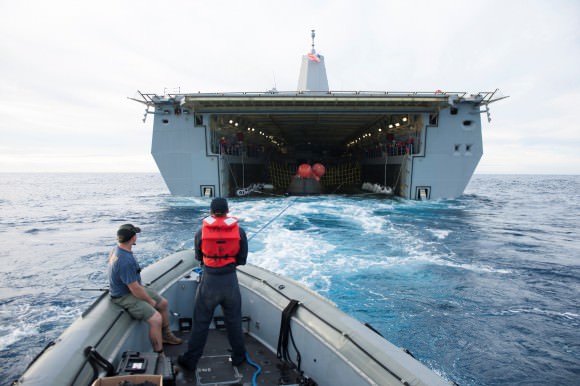
It was brought to shore and off-loaded from the USS Anchorage at US Naval Base San Diego.
Orion was then hauled 2700 miles across the US from California on a flat bed truck for her homecoming arrival back to the Kennedy Space Center in Florida on Dec. 19 just prior to the Christmas holidays.
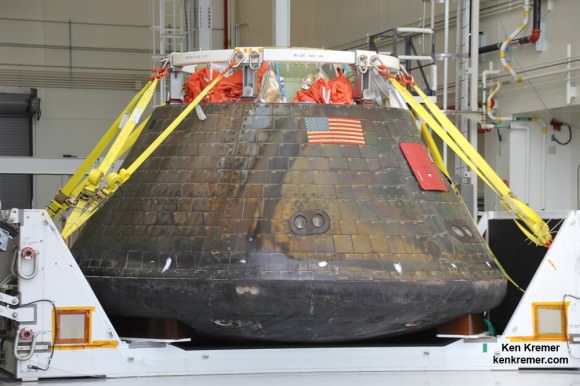
Orion’s inaugural test flight began with the flawless Dec. 5 launch as it soared to orbit atop the fiery fury of a 242 foot tall United Launch Alliance Delta IV Heavy rocket – the world’s most powerful booster – at 7:05 a.m. EST from Space Launch Complex 37 (SLC-37) at Cape Canaveral Air Force Station in Florida.
Orion flew on its two orbit, 4.5 hour flight maiden test flight on the Exploration Flight Test-1 (EFT-1) mission that carried the capsule farther away from Earth than any spacecraft designed for astronauts has traveled in more than four decades.
Humans have not ventured beyond low Earth orbit since the launch of Apollo 17 on NASA’s final moon landing mission on Dec. 7, 1972.
EFT-1 tested the rocket, second stage, and jettison mechanisms as well as avionics, attitude control, computers, environmental controls and electronic systems inside the Orion spacecraft, heat shield, thermal protection tiles, and ocean recovery operations.
NASA intends that the EFT-1 test flight starts the agency on the long awaited road to send astronauts beyond Earth and eventually to Mars in the 2030s.
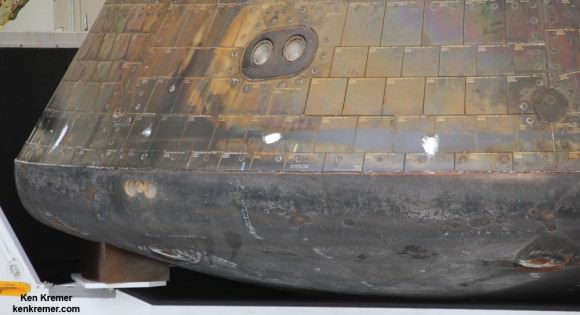
Watch for Ken’s ongoing Orion coverage from onsite at the Kennedy Space Center about the historic launch on Dec. 5.
Stay tuned here for Ken’s continuing Earth and planetary science and human spaceflight news.


